Like many of my clients, you may have a dusty pile of paper savings bonds lying around somewhere. Maybe they belong to you or your children. Odds are they were gifts from an older relative. Most likely they are EE bonds, which have their charms.**
However, the savings bond I want to talk about today is the I bond.
Jason Zweig of the WSJ recently called I bonds “the best-kept secret in America”.
I bonds were introduced in 1998. The “I” stands for inflation, which has been heating up recently.
The variable inflation rate you earn on I bonds is adjusted every 6 months in May and November based on inflation as measured by the Consumer Price Index.
There are several great features of I bonds:
- They are inflation-protected = you don’t lose purchasing power
- The current composite rate (which consists of the inflation rate + a fixed rate) is 3.54%, substantial compared to other cash vehicles such as money markets or savings accounts.
- Based on recent inflation readings the next rate adjustment, to be announced on November 1st will likely be over 6.5% (!)
- I bonds are principal-protected = you cannot lose money
- Even in periods of deflation, the composite interest rate cannot be less than 0%.
- Even in periods of deflation, the composite interest rate cannot be less than 0%.
- I bonds are federal income tax-deferred = you don’t pay any federal tax on the interest income until you cash the bond.
- I bonds are state and local income-tax-free = the interest is never taxed by any state or locality
- I bonds have an education tax exclusion = qualified taxpayers can use the bonds to pay for qualified education expenses tax-free
- There are a number of additional requirements to qualify for this, including an income limitation.
To my knowledge, there is not anything else available today with this unique combination of features. For example, cash savings accounts are principal-protected but almost always lag inflation. Treasury Inflation-Protected Securities (TIPS) are inflation-protected but can lose principal.
So what’s the downside? Always a good question.
- You cannot cash the I-bond for at least one year after purchase, and if you cash them before 5 years you forfeit the last 3 months of interest
- You can only buy them in electronic format via treasurydirect.gov and they must be held there.
- The site is “kludgy” and doesn’t have the easiest user interface.
- The site is “kludgy” and doesn’t have the easiest user interface.
- There is a purchase limit of $10,000 per calendar year per Social Security number (a couple can buy $20,000/year)
Note: It is possible to purchase a paper I bonds up to $5000 using your federal income tax refund; this allows you to go above the $10,000/year limit.
Like any investment, I bonds are not right for everyone. But for many investors, building a position in I bonds over time as part of a broadly diversified global portfolio is a great opportunity to add inflation protection to the portfolio.
**If you’re curious how much your dusty pile of savings bonds is worth you can find out using the Savings Bond Calculator at treasurydirect.gov
